To read this content please select one of the options below:
Please note you do not have access to teaching notes, customer journeys: a systematic literature review.
Journal of Service Theory and Practice
ISSN : 2055-6225
Article publication date: 8 February 2018
Issue publication date: 6 March 2018
Customer journeys have become an increasingly important topic in service management and design. The purpose of this paper is to review customer journey terminology and approaches within the research literature prior to 2013, mainly from the fields of design, management, and marketing.

Design/methodology/approach
The study was conducted as a systematic literature review. Searches in Google Scholar, Scopus, Web of Knowledge, ACM Digital Library, and ScienceDirect identified 45 papers for the analysis. The papers were analyzed with respect to customer journey terminology and approaches, the relation to customer experience, the referenced background, and the use of visualizations.
Across the reviewed literature, customer journeys are described not only as a means to take the viewpoint of the customer, but also to reach insight into their experiences. A rich and at times incoherent customer journey terminology is analyzed and discussed, as are two emerging customer journey approaches: customer journey mapping (analysis of a service process “as is”) and customer journey proposition (generative activities leading toward a possible service “to be”).
Research limitations/implications
The review is limited to analyzing and making claims on research papers that explicitly apply the term customer journey. In most of the reviewed papers, customer journeys are not the main object of interest but are discussed as one of several topics.
Practical implications
A nuanced discussion of customer journey terminology and approaches is provided, supporting the practical application of a customer journey perspective.
Originality/value
The review contributes a needed common basis for future customer journey research and practice.
- Literature review
- Service design
- Service management
- Customer journey
Acknowledgements
The main part of this work was supported by grant no. 219800 from the Research Council of Norway. Its finalization was supported by grant no. 235526 from the Research Council of Norway. The authors wish to thank Ragnhild Halvorsrud and the anonymous reviewers for their patient help and support throughout the process.
Følstad, A. and Kvale, K. (2018), "Customer journeys: a systematic literature review", Journal of Service Theory and Practice , Vol. 28 No. 2, pp. 196-227. https://doi.org/10.1108/JSTP-11-2014-0261
Emerald Publishing Limited
Copyright © 2018, Emerald Publishing Limited
Related articles
All feedback is valuable.
Please share your general feedback
Report an issue or find answers to frequently asked questions
Contact Customer Support
Browse by author
Going on a journey: A review of the customer journey literature
Lookup NU author(s): Dr Ying Tueanrat , Professor Eleftherios Alamanos ORCiD , Professor Savvas Papagiannidis ORCiD
- Accepted version [.pdf]

This work is licensed under a Creative Commons Attribution-NonCommercial-NoDerivatives 4.0 International License (CC BY-NC-ND) .
Customer journey has become an increasingly important concept to understand complex customer behaviours and get insights into their experiences. While the term has been used in diverse disciplines since the 1990s and its literature has grown more than sevenfold over the last eight years, understanding of the topic remains incoherent. This paper adopted a stream-based systematic review approach to identify the underlying themes of the customer journey presented in the business literature up to May 2020. 147 relevant papers were retrieved from Scopus, Web of Science and EBSCO for the analysis. The quantitative content analysis identified five underlying themes of the customer journey, namely, service satisfaction, failure and recovery, co-creation, customer response, channels and technological disruption. The results section reviewed and discussed each theme and its sub-themes in turn. The review identified important gaps in the literature related to the key stages of a customer journey.
Publication metadata
Author(s): Tueanrat Y, Alamanos E, Papagiannidis E
Publication type: Article
Publication status: Published
Journal: Journal of Business Research
Volume: 125
Pages: 336-353
Print publication date: 01/03/2021
Online publication date: 28/12/2020
Acceptance date: 11/12/2020
Date deposited: 13/12/2020
ISSN (print): 0148-2963
ISSN (electronic): 1873-7978
Publisher: Elsevier Inc.
URL: https://doi.org/10.1016/j.jbusres.2020.12.028
DOI: 10.1016/j.jbusres.2020.12.028
Altmetrics provided by Altmetric
Customer journeys: a systematic literature review
Purpose Customer journeys have become an increasingly important topic in service management and design. The purpose of this paper is to review customer journey terminology and approaches within the research literature prior to 2013, mainly from the fields of design, management, and marketing. Design/methodology/approach The study was conducted as a systematic literature review. Searches in Google Scholar, Scopus, Web of Knowledge, ACM Digital Library, and ScienceDirect identified 45 papers for the analysis. The papers were analyzed with respect to customer journey terminology and approaches, the relation to customer experience, the referenced background, and the use of visualizations. Findings Across the reviewed literature, customer journeys are described not only as a means to take the viewpoint of the customer, but also to reach insight into their experiences. A rich and at times incoherent customer journey terminology is analyzed and discussed, as are two emerging customer journey approaches: customer journey mapping (analysis of a service process “as is”) and customer journey proposition (generative activities leading toward a possible service “to be”). Research limitations/implications The review is limited to analyzing and making claims on research papers that explicitly apply the term customer journey. In most of the reviewed papers, customer journeys are not the main object of interest but are discussed as one of several topics. Practical implications A nuanced discussion of customer journey terminology and approaches is provided, supporting the practical application of a customer journey perspective. Originality/value The review contributes a needed common basis for future customer journey research and practice.
- Related Documents
Academic leadership and Lean Six Sigma
Purpose – The purpose of this paper is to demonstrate the ability to researchers of using design of experiments (DoE) as a structured and systematic approach to performing systematic literature reviews. The authors demonstrate a simple case study illustrating the application of DoE in executing a systematic literature review on two popular topics in higher education: academic leadership and Lean Six Sigma. Design/methodology/approach – The methodology involves the systematic literature review of linking academic leadership with terms such as Lean, Six Sigma, Total Quality Management, Maturity Model and Continuous Improvement. The main tool used to structure the systematic literature review is a Taguchi Orthogonal Array design, specifically an L16 grid and the method is verified by conducting another review, replacing the term academic leadership with simply leadership. Findings – The approach identified at first no research papers linking the terms; however, when academic leadership was replaced with university, 19 research papers where discovered. The verification exercise, linking just leadership with the other search string generated over 1,000 results – demonstrating that the tool can find large volumes of articles if they exist, the search was completed for a ten year time frame – 2004 to 2014. Research limitations/implications – The case study focussed on a field which is known to have little current research and the verification exercise deliberately targeted a known large body of research. The authors will continue to use the approach and refine the technique over time. Practical implications – This approach would help any researcher despite of their discipline to identify opportunities and gaps in the current literature. Originality/value – The paper shows how DoE can be used in an academic research-based process. No other literature review approach currently exists which uses Taguchi approach to DoE to filter the search criteria.
Knowledge management: does gender matter? A systematic review of literature
Purpose This paper aims to review for the first time existing research literature about the role of gender in creating, sharing and using knowledge in organizations and proposes a conceptual framework to guide future research directions. Design/methodology/approach Based on the systematic literature review method this study collects, synthesizes and analyses articles related to knowledge management (KM) and gender published in online databases by following a pre-defined review protocol. The paper analyses 41 papers published in peer-reviewed journals. Findings The role of gender in KM has been rarely addressed in KM journals and journals with specific emphasis on gender. The existing literature is fragmented, but existing research suggests that knowledge sharing might be influenced by gender. Based on the analysis and synthesis, a conceptual framework is proposed to guide further research on determining if gender matters in KM. Research limitations/implications Academic researchers should aim to include gender-related variables into their KM research to further explore if gender matters in KM. Practical implications The practical implication suggests that managers and knowledge managers should raise awareness about how stereotypes and gendered expectations about role behaviour affect how knowledge and experiences are created and shared within the organization. Social implications The authors believe that a better understanding of knowledge handling and gendered role expectations at the workplace could also have an impact beyond organizational boundaries. Originality/value The paper presents the first comprehensive systematic literature review of the article published on knowledge creation, sharing and usage and gender and provides a conceptual framework for future research.
Blockchain technology in financial services: a comprehensive review of the literature
Purpose The purpose of this study is to thoroughly review studies that have used blockchain technology in financial services. This study will help provide a holistic framework that would highlight the current state and challenges of the blockchain in the financial services sector. Design/methodology/approach The objective of this study is to systematically examine and organize the current body of research literature that either quantitatively or qualitatively explored the use of blockchain technology in financial services. The study uses PRISMA-guided systematic review along with bibliometric analysis to achieve the purpose. Findings This study contributes to the existing literature by exploring and analyzing systematic studies available on blockchain with special reference to financial services sector. With blockchain based on five principles, namely, computational logic, peer-to-peer transmission, irreversibility of records, distributed database and transparency with pseudonym has immense potential to unleash and transform the financial service industry. With increasing blockchain-based operations of decentralized banking, insurance, trade finance, financial markets and cryptocurrency market, the subject is rapidly growing and seeking considerable contribution from scholars from around the world. Research limitations/implications This study uses systematic literature review approach, which has its own demerits. Like other studies based on Systematic Literature Review, this study also suffers from a certain bias such as sample selection bias, publication bias, data interpretation and the combination of quantitative and qualitative studies in the population. Further, the adoption and resultant benefits of blockchain have not been empirically tested. Practical implications This study can help policymakers and institutions in determining their future course of action, as it highlights the state of research in the area of blockchain technology and financial services. Originality/value Very few studies have done a comprehensive review of literature on blockchain in financial services.
Information and cyber security maturity models: a systematic literature review
Purpose This paper aims to clarify the uncertainty reflected in the current state of information security maturity evaluation where it has not enough matured and converged so that a generic approach or many specfics approaches become the go-to choice. In fact, in the past decade, many secruity maturity models are still being produced and remain unproven regardless of the existence of ISO 21827. Design/methodology/approach The authors have used the systematic literature review to summarize existing research, help identify gaps in the existing literature and provide background for positioning new research studies. Findings The authors highlighted the prevalent influence of the ISO/IEC 27001/27002 standard but raised the necessity for an in-depth investigation of ISO 21827. The authors also made the implementation facet a central topic of our review. The authors found out that, compared to the number of proposed models, implementation experiments are lacking. This could be due to the arduous task of validation and it could also be the reason why specific models are dominant. Originality/value While the research literature contains many experience reports and a few case studies on information security maturity evaluation, a systematic review and synthesis of this growing field of research is unavailable as far as the authors know. In fact, the authors only picked-up one bodywork [Maturity models in cyber security A systematic review (2017)] carrying out a literature review on security maturity models between 2012 and 2017, written in Spanish.
Addressing big data challenges in smart cities: a systematic literature review
Purpose Big Data has become crucial for fulfilling the vision of smart cities; however, there are several challenges associated with its use. This study aims to provide a holistic view of challenges of using Big Data in smart cities and the solutions to deal with them by systematically selecting, reviewing and synthesizing the literature in this area. Design/methodology/approach A systematic literature review was conducted by following a rigorous search protocol that identified a total of 310 peer-reviewed academic research papers. These papers were subsequently filtered and finally 38 relevant papers were selected. Findings A number of major challenges (human dynamics, privacy, security, volume, velocity, variety, veracity and value) associated with Big Data in a smart city and the respective solutions to address them were identified. This study primarily contributes in providing the process of effectively managing Big Data in smart cities. Practical implications The study provides valuable information to the Big Data practitioners by illustrating the process of effective management of Big Data in smart cities. This study further provides the directions to the future researchers. Originality/value The study is original and is based on the existing literature and its interpretation.
Systematic review on sustainable entrepreneurship education (SEE): a framework and analysis
PurposeSustainable entrepreneurship education (SEE) is a field, which mingles two imperative fields of research, sustainable entrepreneurship and entrepreneurship education. This emerging area has gained momentum in recent years, and various quantitative and qualitative studies are carried upon to explore its diverse dimensions, literature remains scattered. This paper aims to explore the holistic picture of SEE by compiling the research articles, through a systematic literature review of prior research studies.Design/methodology/approachTwo prominent databases are considered, and these databases then are searched with appropriately designed search strings. Based on an exclusion and inclusion criteria developed by the authors, 59 research papers are selected for further investigation. These research papers are then studied rigorously for review and qualitative content analysis.FindingsA conceptual framework comprising of the areas of these research contributions is proposed as an outcome. This framework provides insights about the existing state and areas of SEE research namely: (1) Institutional framework, (2) Teaching/learning approaches and (3) External interactions and provides further direction for research.Research limitations/implicationsThe present study makes a significant contribution both in theoretical and in practical sense. (1) Compiled the extant literature on sustainable entrepreneurship education; (2) Developed a protocol to conduct the systematic review of literature on sustainable entrepreneurship education; (3) Reported the status of research on sustainable entrepreneurship education, and proposed a framework on existing work; (4) Presented the emerging topics, issues and challenges that need to be addressed in future research.Originality/valueThis article seeks to present a systematic literature review of the research field on sustainable entrepreneurship education. A review of existing literature in this field would certainly help to advance future research efforts as it presents a comprehensive picture of the status quo of this research field.
A systematic literature review of community disaster resilience: main and related research areas and agendas
PurposeThis study aims to characterize the main research areas of published works, identify the disciplines that associated with the works and propose research agendas for future inquiries, based on a systematic literature review that encompasses 89 research papers from 2010 to 2020.Design/methodology/approachThis review commenced with the definition of the three research questions, and subsequently three steps were followed: (1) defining criteria for research paper selection; (2) specifying the data bases and selecting the papers based on the criteria and (3) data analysis, conclusion and discussion of selected papers. The search was limited to the selection of research papers in English, focusing on “community disaster resilience” which is the subject of this review and referred to as keywords which were used for the online search for papers. All these three words must be present in the title of the selected papers.FindingsThe area “resilience management” and “disaster resilience assessment” accounted for 43% of the studies, and it indicates that research has emphasized the description of how community disaster resilience has been managed and assessed. Three disciplines relating to disaster resilience are disaster risk science, public health and environment, and it indicates that research has fostered core areas of community disaster resilience. Three key research agenda include a growing trend to describe successful efforts to avert a potentially catastrophic disaster through solution-based case studies; a paradigmatic shift and implementation of how communities could help the disaster victims recuperate from disasters.Research limitations/implicationsThis review is limited to the numbers of chosen papers, as only full papers were chosen. However, in order to establish more rigorous and inclusive results of the study, the numbers of citations of published papers to be chosen for future inquiry should be taken into account.Originality/valueThis present review originally investigated how the concept of disaster resilience has been applied at the community level and in related areas. As resilience is a multidisciplinary concept that has been investigated by several different disciplines, such as sustainability, psychology, economy and sociology, this study looked into how disciplines related to community disaster resilience to provide agenda for future inquiries. This study therefore characterized the main research areas of published works, identified the disciplines that associated with the works and proposed a research agenda for future inquiries.
A systematic literature review of Lean Six Sigma in different industries
Purpose The purpose of this paper is to review Lean Six Sigma (LSS) literature and report different definitions, demographics, methodologies and industries. Design/methodology/approach This paper highlights various definitions by different researchers and practitioners. A total of 235 research papers has been reviewed for the LSS theme, research methodology adopted, type of industry, author profile, country of research and year of publication. Findings From the review, four significant LSS classifications were identified that deal with the spread of LSS in different industries followed by observation for classification. Practical implications LSS is a strategy for success, but it did not examine its presence in various Industries. From this paper, readers can understand the quantum of its spread before implementing LSS. For academicians, it will be a comprehensive list of papers for research. Originality/value This paper reviews 235 research papers for their year, author profile, research methodology and type of industry. Various characteristics of LSS definitions and their theme are also reviewed.
A systematic literature review of healthcare supply chain and implications of future research
Purpose This paper aims to review the healthcare supply chain (HSC) literature along various areas and to find out the gap in it. Design/methodology/approach In total, 143 research papers were reviewed during 1996-2017. A critical review was carried out in various dimensions such as research methodologies/data collection method (empirical, case study and literature review) and inquiry mode of research methodology (qualitative, quantitative and mixed), country-specific, targeted area, research aim and year of publication. Findings Supply chain (SC) operations, performance measurement, inventory management, lean and agile operation, and use of information technology were well studied and analyzed, however, employee and customer training, tracking and visibility of medicines, cold chain management, human resource practices, risk management and waste management are felt to be important areas but not much attention were made in this direction. Research limitations/implications Mainly drug and vaccine SC were considered in current study of HSC while SC along healthcare equipment and machine, hospitality and drug manufacturing related papers were excluded in this study. Practical implications This literature review has recognized and analyzed various issues relevant to HSC and shows the direction for future research to develop an efficient and effective HSC. Originality/value The insight of various aspects of HSC was explored in general for better and deeper understanding of it for designing of an efficient and competent HSC. The outcomes of the study may form a basis to decide direction of future research.
Servant Leadership: A systematic literature review—toward a model of antecedents and outcomes
The purpose of this article is multi-layered. First, we focus on gaining a comprehensive insight into a research area which just recently received more recognition in management literature: servant leadership. Second, we identify antecedent and outcomes of servant leadership within the existing research body. Third, we synthesize and develop a comprehensive servant leadership model. It assists academics and practitioners in keeping pace with the increasing servant leadership literature. The systematic literature review provides explanations as to why managers practice servant leadership. The study also contributes to a better understanding of the outcomes of servant leadership and brings clarity to a discombobulated group of studies.
Export Citation Format
Share document.
Academia.edu no longer supports Internet Explorer.
To browse Academia.edu and the wider internet faster and more securely, please take a few seconds to upgrade your browser .
Enter the email address you signed up with and we'll email you a reset link.
- We're Hiring!
- Help Center

Customer journeys: a systematic literature review

Journal of Service Theory and Practice
Purpose Customer journeys have become an increasingly important topic in service management and design. The purpose of this paper is to review customer journey terminology and approaches within the research literature prior to 2013, mainly from the fields of design, management, and marketing. Design/methodology/approach The study was conducted as a systematic literature review. Searches in Google Scholar, Scopus, Web of Knowledge, ACM Digital Library, and ScienceDirect identified 45 papers for the analysis. The papers were analyzed with respect to customer journey terminology and approaches, the relation to customer experience, the referenced background, and the use of visualizations. Findings Across the reviewed literature, customer journeys are described not only as a means to take the viewpoint of the customer, but also to reach insight into their experiences. A rich and at times incoherent customer journey terminology is analyzed and discussed, as are two emerging customer journ...
Related Papers
The Theoretical and Practical Evolution of Customer Journey and Its Significance in Services Sustainability
Anastasia Gerou
Annales Universitatis Mariae Curie-Skłodowska, sectio H – Oeconomia
Ievgenii Ugolkov
International Journal of Human Resource Management and Research (IJHRMR)
Purushottam Bung
Customer Experience (CX) is the new buzzword in the corporate world. Marketing has evolved through various stages of Sales, Marketing, Customer Relationship Management (CRM) and now Customer Experience Management (CEM).With the advent of Digital Touch points, customers are increasingly using Google, Emails, Facebook, WhatsApp, Twitter, etc. for information research to guide them in their purchase decisions. Companies across the world have realized the importance of this and have increasingly started focusing on mapping / understanding their Customer Experience Journey (CxJ) across Physical and Digital Touch points from discovery to advocacy, for better productivity and better profitability. However, implementation of the Customer Experience Management (CEM) is proving to be challenging without a holistic approach and total involvement of all the staff from Top Management to Bottom of the pyramid staff. The study will be primarily based on Secondary Research and informal interviews of Senior Executives involved in CRM / CEM implementation. Attempt has been made in this paper to conceptualize Customer Experience Management using a model and probe into the importance and relevance of Customer Experience Management in today’s digital and knowledge based economy from both the perspectives, i.e. Productivity and Profitability. The article will also discuss on the challenges of CEM implementation in companies for effective results, especially in India. The paper is expected to provide guiding principles for effective implementation of CEM in the Indian context. KEYWORDS: Customer Experience, Customer Experience Management (CEM), Customer Experience Journey & Customer Touch Points
Journal of Service Management
Elina Jaakkola
PurposeThe quality of the customer journey has become a critical determinant of successful service delivery in contemporary business. Extant journey research focuses on the customer path to purchase, but pays less attention to the touchpoints related to service delivery and consumption that are key for understanding customer experiences in service-intensive contexts. The purpose of this study is to conceptualize service journey quality (SJQ), develop measures for the construct and study its key outcomes.Design/methodology/approachThe study uses a discovery-oriented research approach to conceptualize SJQ by synthesizing theory and field-based insights from customer focus group discussions. Next, using consumer survey data (N = 278) from the financial services context, the authors develop measures for the SJQ. Finally, based on an additional survey dataset (N = 239), the authors test the nomological validity and predictive relevance of the SJQ.FindingsSJQ comprises of three dimensions...
Understanding customer experience and the customer journey over time is critical for firms. Customers now interact with firms through myriad touch points in multiple channels and media, and customer experiences are more social in nature. These changes require firms to integrate multiple business functions, and even external partners, in creating and delivering positive customer experiences. In this article, the authors aim to develop a stronger understanding of customer experience and the customer journey in this era of increasingly complex customer behavior. To achieve this goal, they examine existing definitions and conceptualizations of customer experience as a construct and provide a historical perspective of the roots of customer experience within marketing. Next, they attempt to bring together what is currently known about customer experience, customer journeys, and customer experience management. Finally, they identify critical areas for future research on this important topic.
Journal of the Academy of Marketing Science
Linda Price
Anglicisms in a Financial Corpus: Exploiting Resources for Terminological Retrieval and Analysis
Chelo Vargas-Sierra
Para visualizar el libro electrónico en la nube de lectura envíe junto a su nombre y apellidos una fotografía del código de barras situado en la contraportada del libro y otra del ticket de compra a la dirección:
European Psychiatry
International Journal of Social Sciences Review
Faisal Fadilla Noorikhsan
This study analyze how social conditions during the reign of Basuki Tjahaja Purnama (Ahok) affected the escalation of the Islamic community organization Front Pembela Islam (FPI) movement and built the reality of socio-political conflicts that occurred in DKI Jakarta from 2014 to 2017. The method used in this research is a qualitative research method using a case study approach. The case study approach was used to analyze how the process of forming the escalation of the Islamic community organization movement of Front Pembela Islam (FPI) against socio-political conditions during Ahok's reign in DKI Jakarta from 2014 to 2017. Using theories related to the concept of Political Opportunity, New Social Movements, and Identity Theory becomes an analytical knife to explain questions that have been formulated academically and, of course, produce an answer from the results of the analysis. From the results of the research, the Islamic Mass Organization of Front Pembela Islam (FPI) was o...
RELATED PAPERS
Govhar Baxshaliyeva
Guillermo Cabala
Composites Part A: Applied Science and Manufacturing
MD FARHAN Ansari
怎么购买美国亚利桑那大学毕业证 ua学位证书硕士文凭证书GRE成绩单原版一模一样
Fabio Machado da Silva
Hikmah Hasibuan
The Annals of Thoracic Surgery
Opus et Educatio
Mónika Perger
RELATED TOPICS
- We're Hiring!
- Help Center
- Find new research papers in:
- Health Sciences
- Earth Sciences
- Cognitive Science
- Mathematics
- Computer Science
- Academia ©2024
Browse Econ Literature
- Working papers
- Software components
- Book chapters
- JEL classification
More features
- Subscribe to new research
RePEc Biblio
Author registration.
- Economics Virtual Seminar Calendar NEW!

Going on a journey: A review of the customer journey literature
- Author & abstract
- 67 References
- 23 Citations
- Most related
- Related works & more
Corrections
- Tueanrat, Yanika
- Papagiannidis, Savvas
- Alamanos, Eleftherios
Suggested Citation
Download full text from publisher, references listed on ideas.
Follow serials, authors, keywords & more
Public profiles for Economics researchers
Various research rankings in Economics
RePEc Genealogy
Who was a student of whom, using RePEc
Curated articles & papers on economics topics
Upload your paper to be listed on RePEc and IDEAS
New papers by email
Subscribe to new additions to RePEc
EconAcademics
Blog aggregator for economics research
Cases of plagiarism in Economics
About RePEc
Initiative for open bibliographies in Economics
News about RePEc
Questions about IDEAS and RePEc
RePEc volunteers
Participating archives
Publishers indexing in RePEc

Privacy statement
Found an error or omission?
Opportunities to help RePEc
Get papers listed
Have your research listed on RePEc
Open a RePEc archive
Have your institution's/publisher's output listed on RePEc
Customer Journey Maps — Walking a Mile in Your Customer’s Shoes
Perhaps the biggest buzzword in customer relationship management is “engagement.” Engagement is a funny thing, in that it is not measured in likes, clicks, or even purchases. It’s a measure of how much customers feel they are in a relationship with a product, business or brand. It focuses on harmony and how your business, product or brand becomes part of a customer’s life. As such, it is pivotal in UX design . One of the best tools for examining engagement is the customer journey map.
As the old saying in the Cherokee tribe goes, “Don’t judge a man until you have walked a mile in his shoes” (although the saying was actually promoted by Harper Lee of To Kill a Mockingbird fame). The customer journey map lets you walk that mile.
“Your customer doesn’t care how much you know until they know how much you care.” — Damon Richards, Marketing & Strategy expert
What Is a Customer Journey Map?
A customer journey map is a research-based tool. It examines the story of how a customer relates to the business, brand or product over time. As you might expect — no two customer journeys are identical. However, they can be generalized to give an insight into the “typical journey” for a customer as well as providing insight into current interactions and the potential for future interactions with customers.
Customer journey maps can be useful beyond the UX design and marketing teams. They can help facilitate a common business understanding of how every customer should be treated across all sales, logistics, distribution, care, etc. channels. This in turn can help break down “organizational silos” and start a process of wider customer-focused communication in a business.
They may also be employed to educate stakeholders as to what customers perceive when they interact with the business. They help them explore what customers think, feel, see, hear and do and also raise some interesting “what ifs” and the possible answers to them.
Adam Richardson of Frog Design, writing in Harvard Business Review says: “A customer journey map is a very simple idea: a diagram that illustrates the steps your customer(s) go through in engaging with your company, whether it be a product, an online experience, retail experience, or a service, or any combination. The more touchpoints you have, the more complicated — but necessary — such a map becomes. Sometimes customer journey maps are “cradle to grave,” looking at the entire arc of engagement.”
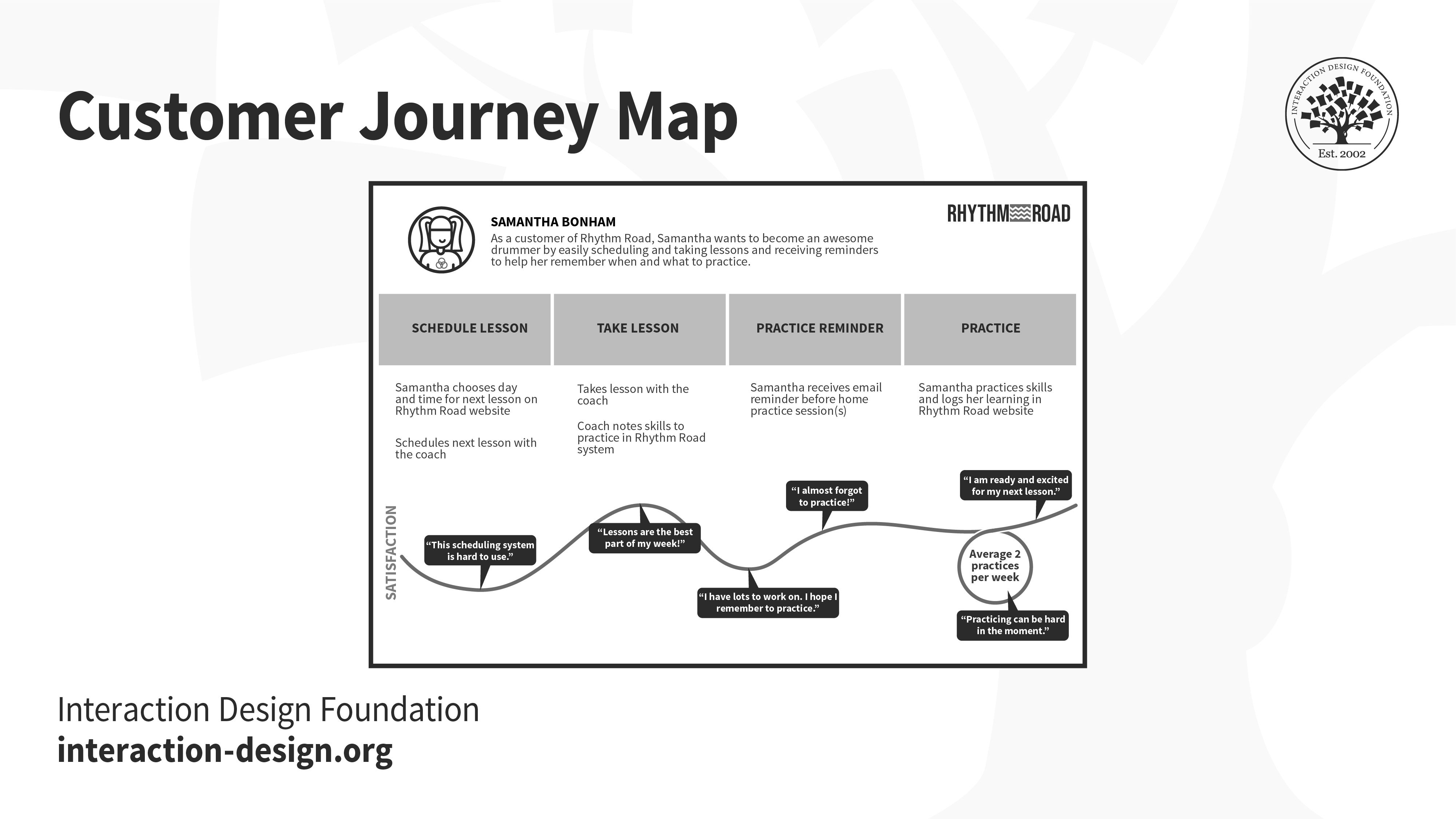
A fictitious customer journey for the persona Samantha Bonham through the Rhythm Road learning service.
What Do You Need to Do to Create a Customer Journey Map?
Firstly, you will need to do some preparation prior to beginning your journey maps; ideally you should have:
User personas . If you can’t tell a typical user’s story, how will you know if you’ve captured their journey?
A timescale. Customer journeys can take place in a week, a year, a lifetime, etc., and knowing what length of journey you will measure before you begin is very useful indeed.
A clear understanding of customer touchpoints . What are your customers doing and how are they doing it?
A clear understanding of the channels in which actions occur. Channels are the places where customers interact with the business — from Facebook pages to retail stores. This helps you understand what your customers are actually doing.
An understanding of any other actors who might alter the customer experience. For example, friends, family, colleagues, etc. may influence the way a customer feels about any given interaction.
A plan for “moments of truth” — these are the positive interactions that create good feelings in customers and which you can use at touchpoints where frustrations exist.

User personas are incredibly useful tools when it comes to putting together any kind of user research . If you haven’t developed them already, they should be a priority for you, given that they will play such a pivotal role in the work that you, and any UX teams you join in the future, will produce.
Once you’ve done your preparation, you can follow a simple 8-point process to develop your customer journey maps:
Review Organization Objectives — what are your goals for this mapping exercise? What organizational needs do you intend to meet?
Review Current User Research — the more user research you have at your fingertips, the easier this exercise will be. Be creative, and if you don’t have the right research to define the journey, then consider how you can carry that research out.
Review Touchpoints and Channels — the next step is to ensure that you effectively map touchpoints and channels. A touchpoint is a step in the journey where the user interacts with a company or product, and a channel is the means by which the user does this. So, for example, a touchpoint could be “pay this invoice” and channels could be “online,” “retail,” “over the phone,” “mail,” etc. It can also help to brainstorm at this stage and see if there are any touchpoints or channels you’ve missed in your original data collection exercise.
Create an Empathy Map. An empathy map examines how the customer feels during each interaction — you want to concentrate on how the customer feels and thinks as well as what they will say, do, hear, etc. in any given situation.
Build an affinity diagram . The idea here is first to brainstorm around each concept you’ve touched on and then to create a diagram which relates all these concepts, feelings, etc. together . This is best achieved by grouping ideas in categories and labeling them. You can eliminate concepts and the like which don’t seem to have any impact on customer experience at this stage, too.
Sketch the customer journey. How you do this is up to you; you can build a nice timeline map that brings together the journey over the course of time. You could also turn the idea into a video or an audio clip or use a completely different style of diagram. The idea is simply to show the motion of a customer through touchpoints and channels across your time frame and how that customer feels about each interaction on that journey. The map should include the outputs of your empathy map and affinity diagram.
Iterate and produce. Then, take your sketches and make them into something useful; keep refining the content and then produce something that is visually appealing and useful to stakeholders, team members, etc. Don’t be afraid to rope in a graphic designer at this stage if you’re not good at making things look awesome.
Distribute and utilize. The journey map serves no purpose sitting on your hard drive or in your desk drawer — you need to get it out there to people and explain why it’s important. Then, it needs to be put to use; you should be able to define KPIs around the ideal journey, for example, and then measure future success as you improve the journey.
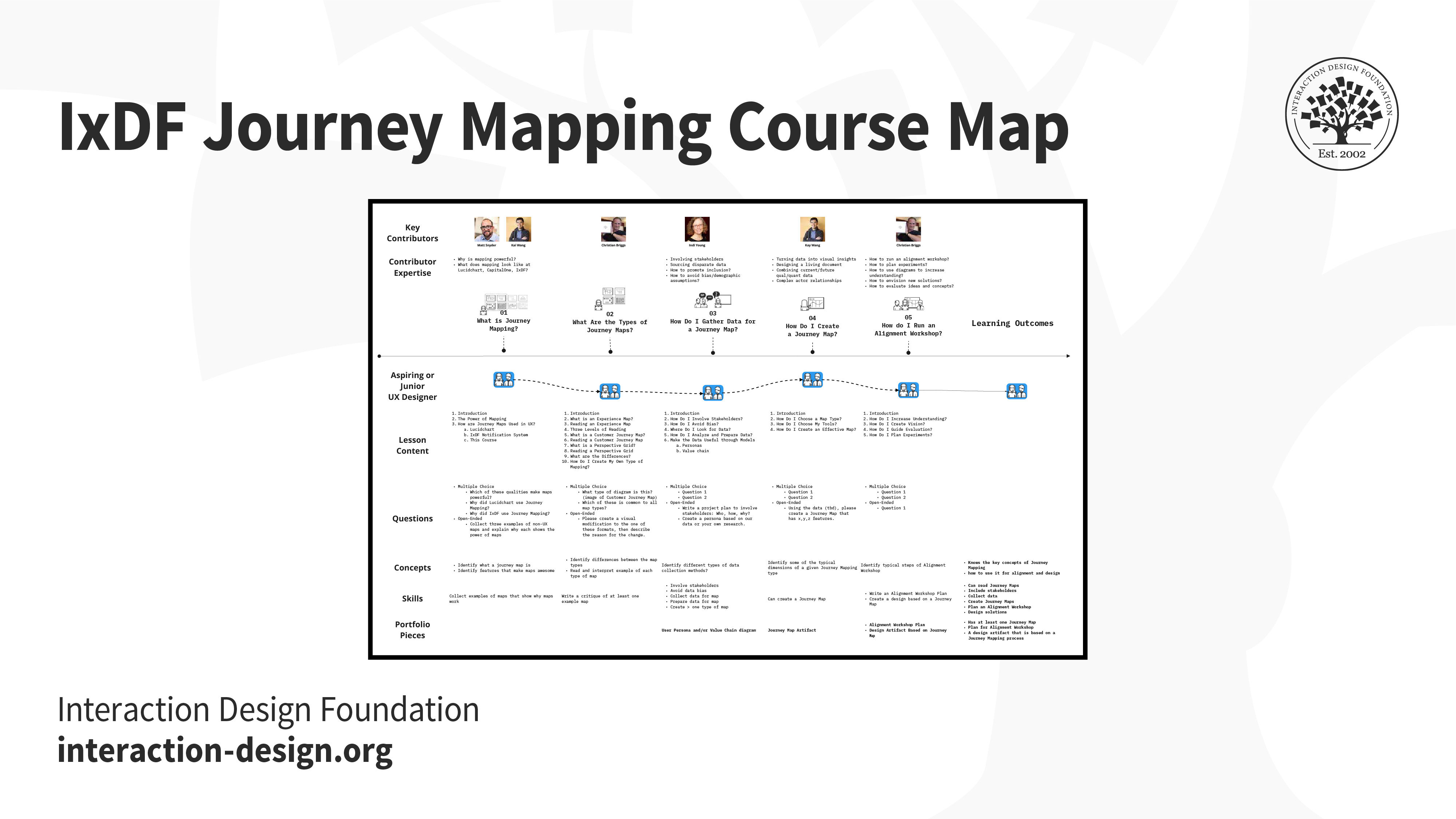
When creating the Journey Mapping course , the IxDF used a modified customer journey map to better understand the end-to-end experience for aspiring and junior UX designers .
Anatomy of a Customer Journey Map
A customer journey map can take any form or shape you like, but let’s take a look at how you can use the Interaction Design Foundation’s template (link below).
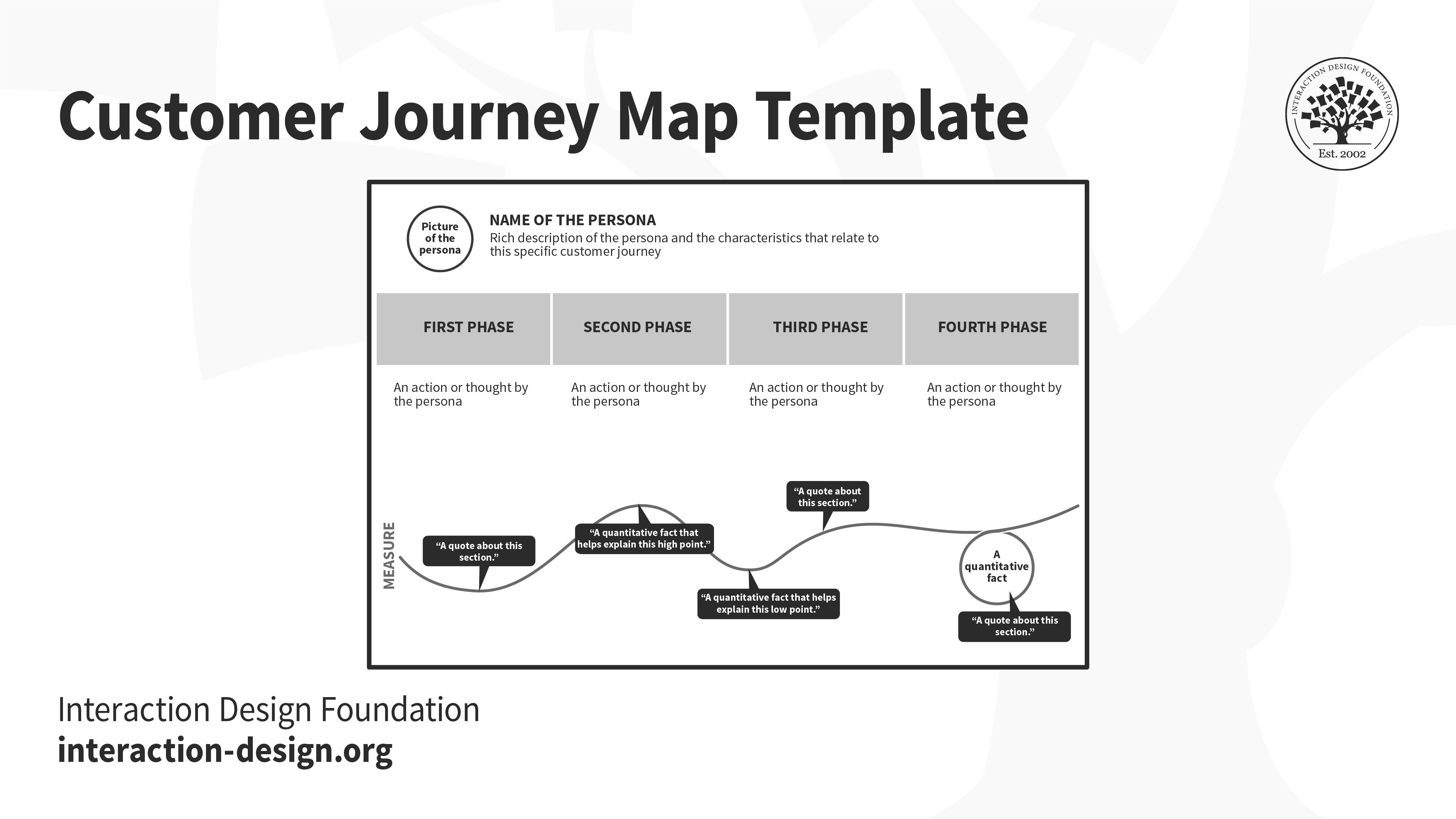
A very basic customer journey map template.
The map here is split into several sections: In the top zone, we show which persona this journey refers to and the scenario which is described by the map.
The middle zone has to capture the thoughts, actions and emotional experiences for the user, at each step during the journey. These are based on our qualitative user research data and can include quotes, images or videos of our users during that step. Some of these steps are “touchpoints” — i.e., situations where the customer interacts with our company or product. It’s important to describe the “channels” in each touchpoint — i.e., how that interaction takes place (e.g., in person, via email, by using our website, etc.).
You can download our Customer Journey Map Template here:

The Take Away
Creating customer journeys (including those exploring current and future states) doesn’t have to be a massively time-consuming process — most journeys can be mapped in less than a day. The effort put in is worthwhile because it enables a shared understanding of the customer experience and offers each stakeholder and team member the chance to contribute to improving that experience. Taking this “day in the life of a customer” approach will yield powerful insights into and intimate knowledge of what “it’s like” from the user’s angle. Seeing the details in sharp relief will give you the chance to translate your empathy into a design that better accommodates your users’ needs and removes (or alleviates) as many pain points as possible.
References and Where to Learn More
Learn how to create different types of journey maps, including service blueprints and experience maps in the course “Journey Mapping” .
User experience strategist, Paul Boag gives an overview of customer journey mapping in this article .
Here is a checklist of everything you need to get started with customer journey mapping.
Journey maps come in different formats. Here is one created by Kate Kaplan, Insights Architect at Nielsen Norman Group.
Adam Richardson, a Creative Director at global innovation firm frog design shares another format for journey mapping, in this article .
© Interaction Design Foundation, CC BY-SA 3.0
Visual Design: The Ultimate Guide

Get Weekly Design Tips
Topics in this article, what you should read next, the principles of service design thinking - building better services.
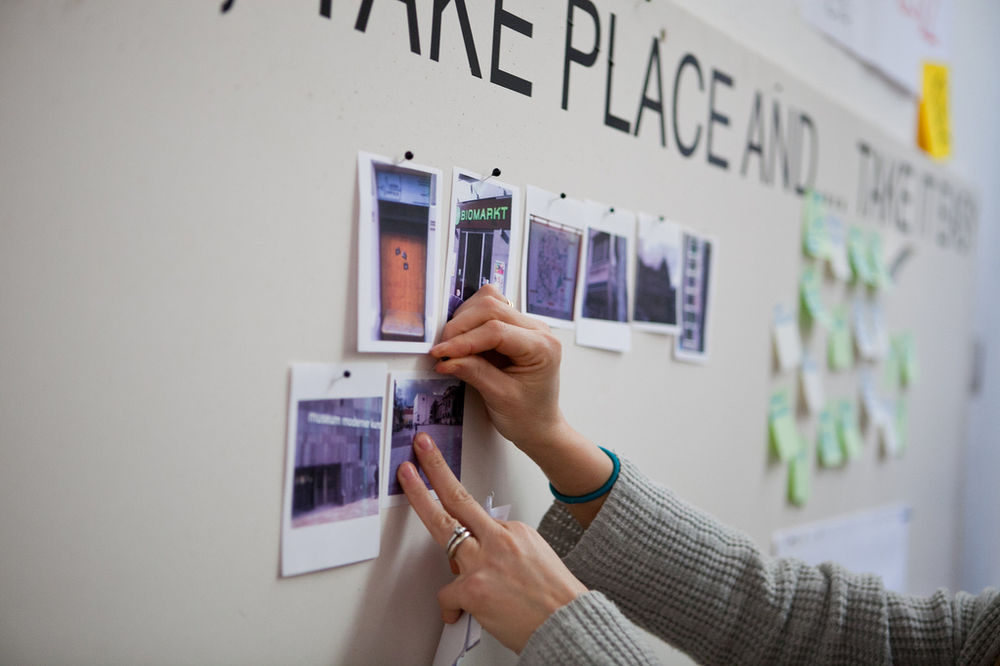
- 1.3k shares
What are Customer Touchpoints & Why Do They Matter?

- 1.2k shares
- 3 years ago
Service Design - Design is Not Just for Products

The Moment of Truth: Build Desirable Relationships with Users and Customers

Customer Lifecycle Mapping - Getting to Grips with Customers

User Experience and Customer Experience - What’s the Difference?

- 3 weeks ago
The Tipping Point in UX Design
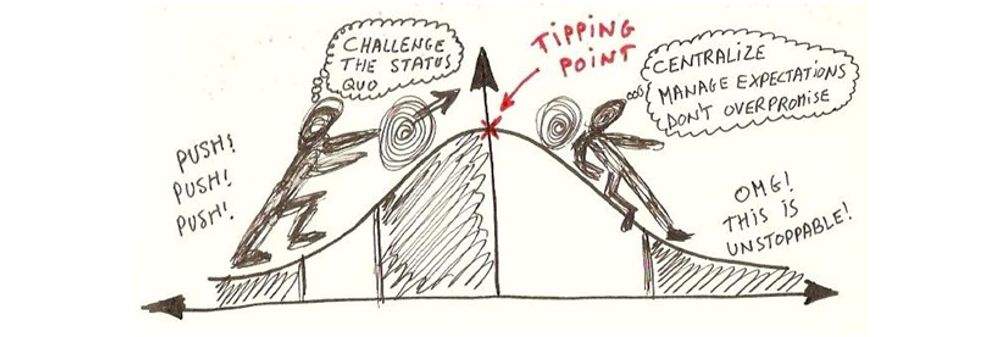
Understand the Service Design Process
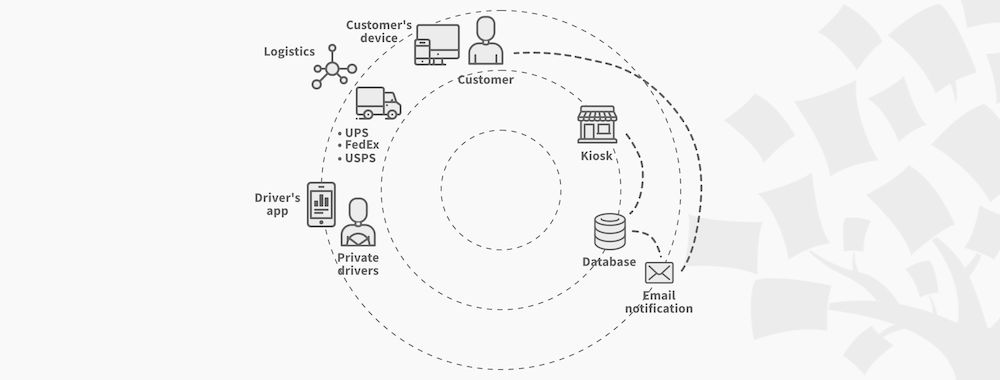
- 2 years ago
Learn the Language of Service Design
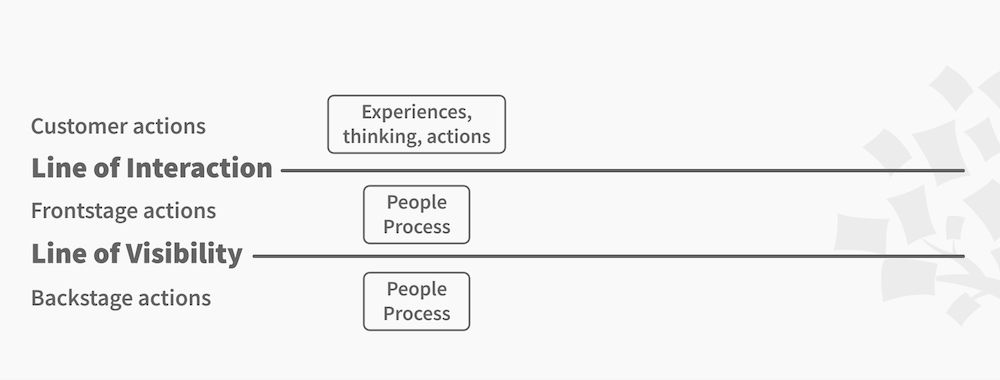
Open Access—Link to us!
We believe in Open Access and the democratization of knowledge . Unfortunately, world-class educational materials such as this page are normally hidden behind paywalls or in expensive textbooks.
If you want this to change , cite this article , link to us, or join us to help us democratize design knowledge !
Privacy Settings
Our digital services use necessary tracking technologies, including third-party cookies, for security, functionality, and to uphold user rights. Optional cookies offer enhanced features, and analytics.
Experience the full potential of our site that remembers your preferences and supports secure sign-in.
Governs the storage of data necessary for maintaining website security, user authentication, and fraud prevention mechanisms.
Enhanced Functionality
Saves your settings and preferences, like your location, for a more personalized experience.
Referral Program
We use cookies to enable our referral program, giving you and your friends discounts.
Error Reporting
We share user ID with Bugsnag and NewRelic to help us track errors and fix issues.
Optimize your experience by allowing us to monitor site usage. You’ll enjoy a smoother, more personalized journey without compromising your privacy.
Analytics Storage
Collects anonymous data on how you navigate and interact, helping us make informed improvements.
Differentiates real visitors from automated bots, ensuring accurate usage data and improving your website experience.
Lets us tailor your digital ads to match your interests, making them more relevant and useful to you.
Advertising Storage
Stores information for better-targeted advertising, enhancing your online ad experience.
Personalization Storage
Permits storing data to personalize content and ads across Google services based on user behavior, enhancing overall user experience.
Advertising Personalization
Allows for content and ad personalization across Google services based on user behavior. This consent enhances user experiences.
Enables personalizing ads based on user data and interactions, allowing for more relevant advertising experiences across Google services.
Receive more relevant advertisements by sharing your interests and behavior with our trusted advertising partners.
Enables better ad targeting and measurement on Meta platforms, making ads you see more relevant.
Allows for improved ad effectiveness and measurement through Meta’s Conversions API, ensuring privacy-compliant data sharing.
LinkedIn Insights
Tracks conversions, retargeting, and web analytics for LinkedIn ad campaigns, enhancing ad relevance and performance.
LinkedIn CAPI
Enhances LinkedIn advertising through server-side event tracking, offering more accurate measurement and personalization.
Google Ads Tag
Tracks ad performance and user engagement, helping deliver ads that are most useful to you.
Share Knowledge, Get Respect!
or copy link
Cite according to academic standards
Simply copy and paste the text below into your bibliographic reference list, onto your blog, or anywhere else. You can also just hyperlink to this article.
New to UX Design? We’re giving you a free ebook!

Download our free ebook The Basics of User Experience Design to learn about core concepts of UX design.
In 9 chapters, we’ll cover: conducting user interviews, design thinking, interaction design, mobile UX design, usability, UX research, and many more!
New to UX Design? We’re Giving You a Free ebook!

IMAGES
VIDEO
COMMENTS
The customer journey literature has been growing at a rapid rate, especially in the last three and a half years, when more than half of the retrieved literature was published. However, the literature has appeared as incoherent due to its diverse theoretical background. Therefore, this stream-based systematic review has attempted to aggregate ...
As the customer journey literature has heavily focused on customer perception and service environment in the purchase phase (Tueanrat et al., 2021), this study has investigated the behavioral ...
Customer journey has become an increasingly important concept to understand complex customer behaviours and get insights into their experiences. While the term has been used in diverse disciplines since the 1990s and its literature has grown more than sevenfold over the last eight years, understanding of the topic remains incoherent. This paper adopted a stream-based systematic review approach ...
Customer journeys have become an increasingly important topic in service management and design. The purpose of this paper is to review customer journey terminology and approaches within the research literature prior to 2013, mainly from the fields of design, management, and marketing.,The study was conducted as a systematic literature review. Searches in Google Scholar, Scopus, Web of ...
Across the reviewed literature, customer journeys are described not only as a means to take the viewpoint of the customer, but also to reach insight into their experiences. A rich and at times incoherent customer journey terminology is analyzed and discussed, as are two emerging customer journey approaches: customer journey mapping (analysis of ...
1. Customer Journey: From Practice to Theory. Patricia Harris, H a r ald Pol and Gerrita v an der Veen 1. Abstract: The focus of this chapter is the customer journey, a concept which has emerged ...
Using customer journey mapping to improve public services: A critical analysis of the literature. Abstract Providing clients with public services that will meet their needs and expectations requires not only testing their satisfaction. In order to better improve service processes in the context….
This paper adopted a stream-based systematic review approach to identify the underlying themes of the customer journey presented in the business literature up to May 2020. 147 relevant papers were retrieved from Scopus, Web of Science and EBSCO for the analysis. The quantitative content analysis identified five underlying themes of the customer ...
Purpose Customer journeys have become an increasingly important topic in service management and design. The purpose of this paper is to review customer journey terminology and approaches within the research literature prior to 2013, mainly from the fields of design, management, and marketing. Design/methodology/approach The study was conducted ...
The customer journey is still primarily a concept from business practice and is an immature field for academics. As a result, we draw upon existing literature streams, which are not directly focused on the customer journey but which deliver key insights and enable us to build understanding. Specifically, we draw upon multichannel management and ...
In the scientific literature, the concept of the "customer journey (CJ)" has only recently been introduced, and, accordingly, it lacks robust empirical evidence. Still, the number of papers concerning the CJ has increased exponentially in recent years. The aim of this paper is to fully represent the available CJ research in services and highlight its importance for service sustainability.
Purpose Customer journeys have become an increasingly important topic in service management and design. The purpose of this paper is to review customer journey terminology and approaches within the research literature prior to 2013, mainly from the fields of design, management, and marketing. Design/methodology/approach The study was conducted ...
The study reviews customer journey terminology and approaches within the research literature prior to 2013, mainly from the fields of design, management, and marketing. ... Across the reviewed literature, customer journeys are described not only as a means to take the viewpoint of the customer, but to reach insight into their experiences. A ...
Abstract. Customer journey has become an increasingly important concept to understand complex customer behaviours and get insights into their experiences. While the term has been used in diverse disciplines since the 1990s and its literature has grown more than sevenfold over the last eight years, understanding of the topic remains incoherent.
However, while CJ-based insight is rapidly developing (Hamilton et al., 2021), little is known about whether or the extent to which the CJ creates value for customers and firms (Pastoors & Baier, 2018), exposing an important literature-based gap.Thus, though a customer's journey with companies like Tesla or Walmart describes the individual's evolving role-related activities with the firm ...
(DOI: 10.1108/JSTP-11-2014-0261) Customer journeys have become an increasingly important topic in service management and design. The purpose of this paper is to review customer journey terminology and approaches within the research literature prior to 2013, mainly from the fields of design, management, and marketing.,The study was conducted as a systematic literature review. Searches in Google ...
Abstract : Purpose: Customer journeys have become an increasingly important topic in service management and design. The purpose of this paper is to review customer journey terminology and approaches within the research literature prior to 2013, mainly from the fields of design, management, and marketing. Design/methodology/approach: The study was conducted as a systematic literature review.
These changes require firms to integrate multiple business functions, and even external partners, in creating and delivering positive customer experiences. In this article, the authors aim to develop a stronger understanding of customer experience and the customer journey in this era of increasingly complex customer behavior.
Abstract. Purpose Customer journeys have become an increasingly important topic in service management and design. The purpose of this paper is to review customer journey terminology and approaches ...
The customer journey Technological disruption: Technological disruption is an emerging literature has been growing at a rapid rate, especially in the last three theme in the context of the customer journey, with most of the related and a half years, when more than half of the retrieved literature was articles published after 2018. Digital ...
The customer journey (Tueanrat et al., 2021) covers a sequential collection of touchpoints ... Data collection was conducted with the help of an interview guideline based on a review of service experience and customer journey literature (e.g., Halvorsrud et al., 2016). All interviews were transcribed verbatim and read to ensure their ...
Customer journey maps are visual representations of customer experiences with an organization. They provide a 360-degree view of how customers engage with a brand over time and across all channels. Product teams use these maps to uncover customer needs and their routes to reach a product or service. Using this information, you can identify pain ...
It focuses on harmony and how your business, product or brand becomes part of a customer's life. As such, it is pivotal in UX design. One of the best tools for examining engagement is the customer journey map. As the old saying in the Cherokee tribe goes, "Don't judge a man until you have walked a mile in his shoes" (although the saying ...